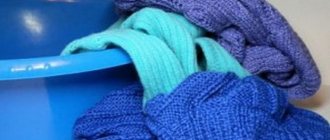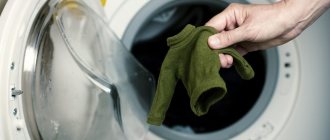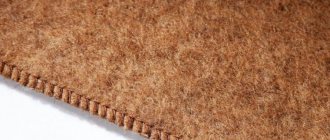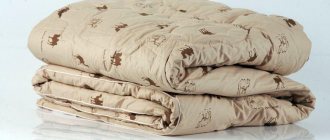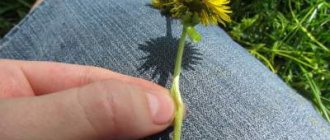Properties of merino wool
Warm and soft material has many advantages:
1. Protection from moisture. The fibers absorb water without becoming wet. The human body remains dry. The fabric neutralizes the smell of sweat, so it is suitable for daily wear.
2. Thermal insulation. Wool retains heat and is suitable for wear in low temperatures. Clothing made from this fabric is suitable for people prone to illness. It improves well-being in diseases such as bronchitis and colds. Dry heat helps cope with osteochondrosis, reduce joint and muscle pain due to arthritis and radiculitis.
3. Comfortable heat dissipation. In merino fiber, a person does not feel either cold or heat. The fabric adapts to environmental conditions. Due to this quality, merino wool is recommended to be used for clothing for newborn children. In the first months of life, babies have not yet developed the necessary thermoregulation, so the fabric will allow them to constantly feel comfortable.
4. Soft fiber. Woolen clothing is often discarded because it is too rough and harsh on the skin. Merino fabric is smooth and silky to the touch.
5. Good fit. Merino wool fiber is fine enough to highlight the silhouette. It does not create excess volume and fits the figure.
6. Eco-friendly. The material is made from natural fibers. It does not cause allergies and is suitable for sensitive skin. Bed linen is made from merino wool. You can sleep on it without using pillowcases and duvet covers. The structured fibers are pleasant to the body and provide a beneficial massage for the skin. A bed made of such material relieves signs of fatigue and helps relax muscles. Thanks to this, sleep is complete and sound.
7. The fabric retains heat, so it is suitable for making thermal underwear. It is also used to create casual clothing. Merino fibers are easily dyed in bright and rich shades.
Washing powder
You can use wool conditioners as they soften the fibers and are easy to wash out. If there is no such product, then hair shampoo will do. Since the hat cannot be washed in hot water, it is not recommended to use washing powder. It is not easily removed from wool at low temperatures, so its granules can remain in the fibers and spoil the appearance.
Many housewives use laundry soap: they grate it, then dissolve it in water to obtain a soap solution. It is important to choose a soap that is unscented and colorless, as wool easily absorbs scents.
Important! You should not use aggressive bleaching chemicals, especially if the product contains chlorine. Such substances will not only settle in the wool, but will also lead to fading and yellowing. Also, chlorine-containing chemicals for fabrics can cause fiber rupture.
You need to wash a wool hat carefully; Do not rub the product too hard, as pellets may appear. It is enough to rub the cap under water and lightly rub it with your fingers.
Washing features
It is better to wash merino fabric using special products marked “for wool”. They take good care of them and do not damage the fibers. Wool gels protect the material from shedding.
For hand washing, the special composition can be replaced with other products. Liquid soap is suitable for washing. It is better to choose one with a neutral pH. Instead of soap, dishwashing detergent is also used.
It is better to avoid washing powders. Grains of the product get stuck in the fabric, which can cause allergies upon contact with the skin. Bleach also deteriorates the properties of wool.
Handwash
Merino clothing will last a long time if you clean it by hand. Should be washed in warm water. The temperature should not exceed 40 degrees. The detergent dissolves in water. The fabric is soaked for several minutes. You cannot keep it in water for longer than 5 minutes, as the product may stretch unevenly.
After soaking, the clothes are washed carefully. Rinse the fabric several times in clean warm water. The wool is squeezed out carefully so as not to damage the fibers. It is not recommended to twist the fabric!
You will find more detailed recommendations and tips on hand washing and cleaning in the article “Caring for woolen items”.
Rules for washing woolen items
There are simple guidelines to follow if you don't want to see a clean but deformed item. For example, many people are interested in whether wool shrinks after washing. Yes, it shrinks - this happens due to the fact that the woolen product is in the water for too long. Experts do not recommend soaking wool so that it spends as little time in water as possible. If this cannot be avoided, reduce the soaking process as much as possible. The problem lies in the characteristics of the wool fibers themselves - they begin to shrink when they are in water. And such products should be washed promptly, the sooner the better.
Washing machine care
Prolonged exposure to water damages woolen items. Therefore, it is better to refuse washing in an automatic machine. An exception is made for small items. Knitted hats, socks, mittens, and thermal underwear are loaded into the washing machine. For sweaters and blankets, hand wash only.
First, things are turned inside out. It is advisable to wash on a delicate cycle without using a spin cycle. The preferred temperature is 40 degrees. If you set the water settings to too hot, things will shrink after washing.
Recommended speed is no more than 600 rpm. When washing, do not mix different materials, as the woolen fabric will become covered with pellets. The only fabric that can be washed with wool is denim. Fabrics of different colors are washed separately so that the color saturation of the products does not change.
After washing, woolen items are immediately removed from the device and dried. If they are left for half an hour or more in the drum of the washing machine, the fabric will become deformed and lose its shape.
Water preparation
Ideally, you need to use lukewarm water so that your hands do not freeze when washing by hand, and the hat does not shrink.
If the item is too dirty, you can add soap shavings and 2 tbsp to the water. l. ammonia. The ingredients should be thoroughly mixed and then poured into a bowl of water. This method is especially good for white items that show the slightest dirt.
If there is no ammonia, then you can use another recipe: mix 3 tsp with 5 liters of water. salt, 10 ml peroxide and 2 tbsp. l. soap shavings. This method allows you to remove traces of rust and also bleach wool.
Drying merino wool
The fabric can be gently squeezed to remove excess moisture. It is not advisable to dry the item with twisting movements. To ensure that the product dries without becoming deformed, it is wrapped in a terry towel. Excess moisture is removed by blotting clothes with a cotton sheet.
The wool is dried in a horizontal position. It is recommended to lay out the products to avoid creases. When dried vertically, woolen items stretch and sag. The fabric should not be dried on radiators or near other electrical appliances.
Merino fabric is ironed using steam. The material must be ironed through an additional layer. A damp towel will do. Ironing begins only when the material is completely dry. And how to properly wash knitted items so that they do not stretch, see the link https://vsepodomu.ru/garderob/chto-delat-esli-rastyanulas-kofta/.
How to dry a wool hat
The wool hat must be dried with a towel.
To prevent the product from losing its shape, you need to properly squeeze out the moisture. The washed cap should be placed on a towel that matches its size, then rolled up. The towel must be twisted in the usual way. This way, it will absorb all the water and the wool hat will not stretch. For the procedure, it is recommended to take a terry towel, as it has better absorbent properties.
Wool may stretch when hanging on ropes and should not be roughly wrung out or twisted by hand. It easily develops creases that are difficult to fix. In addition, you should not dry woolen items in the sun or on a radiator, as they will inevitably shrink.
Advice! It is recommended to purchase a dummy, ball or large jar to dry your wool hat. This way it won't lose its shape or stretch. From time to time it is worth taking it off and straightening it.
It is important to ensure good air circulation so that excess moisture does not accumulate in the room. Too high humidity will lead to slow drying, which can lead to mold growth - and this can be detrimental to wool. For this reason, you should not dry the cap in the bathroom.
How to wash a blanket: instructions and useful tips
To wash merino fabric, choose special products designed for the care of wool or silk. They provide gentle care without damaging the fibers. Gels help protect the product from shedding. Suitable formulations labeled “For delicate fabrics.”
When washing by hand, you can use other means, such as liquid soap. Give preference to formulations with a neutral pH (a measure of the acidity of aqueous solutions). Liquid dish soap can be used. You can use hair shampoo.
When washing merino wool, we advise you to avoid dry washing powders. Their grains easily get stuck in fabric and can cause allergies upon contact with skin. If it is not possible to refuse the dry product, before use, dissolve it in a large volume of water and whip up the foam.
Be sure to read the label before washing. It provides recommendations for caring for a specific type of product.
Our store sells merino items, which indicate how and at what temperature to wash certain clothes. Our staff can also provide useful recommendations on how to wash merino wool. By following these instructions, you will enjoy a high-quality product from Doctor TM for a long time.
Features of caring for a merino wool blanket - what should not be done?
The soft wool of Merino sheep is highly durable, soft and light. As a rule, very beautiful and practical things are made from this fiber - various items of clothing, cozy blankets and other home textiles. Natural material has excellent characteristics:
- the product is able to maintain natural temperature, preventing the body from overheating;
- fibers practically do not absorb external odors and moisture, repel dirt and rarely get dirty;
- It is believed that soft bedspreads can have a healing effect on the human body: alleviate the symptoms of joint disease, warm up during a cold, lower blood pressure and help improve sleep.
According to experts, a high-quality blanket made of natural wool can last for decades. But such a product must be treated with extreme care and proper care must be provided.
Due to their structure, merino accessories are not very susceptible to stains, so they do not need to be cleaned or washed too often. In addition, this can lead to deformation of the product, since the material is more delicate and softer than ordinary sheep's wool. Also, for long-term preservation of the presentation, it is recommended to take into account the following nuances:
- Do not iron, steam or vacuum woolen items;
- there is no need for long soaking before washing;
- natural fibers tend to shrink, so do not wash the fabric in hot water;
- usually the bedspreads are not twisted or squeezed with great force;
- the blanket should dry naturally; you do not need to use any additional means such as a hair dryer, heaters or radiators for this. Due to the direct impact of these devices, the product may lose its useful properties and attractive appearance.
It is permissible to use only special powders and gels intended for the care of woolen items. It is strictly forbidden to use aggressive compounds and bleaches, as they destroy the fibers.
Next, let’s try to understand in more detail how to properly wash an Australian merino wool blanket.
Hand washing rules
Woolen sweaters usually don't get so dirty: bright and greasy stains appear on them only as a result of force majeure. But wool absorbs odors well, dust penetrates between the fibers, so the overall appearance often becomes stale.
Hand washing wool items is the most correct cleaning method. This is the most gentle care option, preserving the softness and tenderness of woolen fabric. How to wash a wool sweater by hand, can it be wrung out? Write down or memorize the rules.
- The first rule is to prepare soft, clean water. Filtered, bottled, and boiled water is excellent for these purposes.
- Dissolve a little detergent in water (they are labeled “for wool”). You should get a soapy, lukewarm solution with foam that is pleasant to the touch.
- Many people do not know at what temperature to wash a wool sweater. But the optimal temperature is not higher than the human body, that is, 36.6 degrees, and better - up to 30. Cold and too hot water lead to damage to delicate wool fibers.
- It’s curious, but all woolen items are washed only inside out: stains and dirt come out faster from the inside out.
- Getting rid of dirt is simple: before washing a wool sweater, it is better to leave the jumper in a soapy solution for a while. The fibers will swell slightly and the dirt will come off faster.
If you are looking for a way to quickly wash a white wool sweater while maintaining its softness and whiteness, pay attention to special products for light-colored items. For example, rinses and conditioners in pearl pastel shades with neutral odors are perfect for these purposes. Wool, like a sponge, absorbs all flavors, which is worth considering when choosing a product.
Rinse water should also be clean, soft, and have a neutral temperature. It is important to rinse sweaters thoroughly, because the detergent should not “get stuck” between the fibers and spoil their quality. We dry woolen jumpers by laying them out on a flat surface. Wool does not need ironing. Although, sometimes you can steam a jumper through cheesecloth to make the wool softer.
Features of wool when washing
Wool is a natural raw material. In general, it is divided into living and dead. The first is sheared from live sheep, the material is characterized by increased softness, wear and durability. Wool, called dead wool, has much worse characteristics because it is obtained from slaughtered animals in slaughterhouses. Before looking for the answer to the question of how to properly wash woolen products, you need to find out what type of material will be processed. Today the following varieties are known:
- camel's wool;
- merino (a special breed of fine-wool sheep that is shorn only at the withers);
- cashmere (down from Tibetan goats);
- mohair (fur from Angora goats);
- Angora (fluff obtained from very fluffy Angora rabbits);
- alpaca (a type of wool obtained from Peruvian llamas).
The labels will help you figure out at what temperature to wash wool. The fact is that natural wool is a very fancy material. In particular, when washing it can:
- deform;
- change color;
- sit down;
- lose natural softness.
Decoding symbols for caring for natural wool products.
Often, washing wool, or more precisely, white items, ends with them turning yellow. In addition, pilling often occurs on washed woolen clothes.
What not to do
- Soak the merino product for a long time, at most 5 minutes.
- Twist merino wool when washing and spinning, otherwise it will become deformed and stretch.
- Use hot water (above 30-40°), boiling. And during washing, sudden temperature changes in the water are not allowed.
- Use bleaches. If difficult-to-remove stains appear on clothing, you need to find a way to remove them without aggressive agents.
- Dry vertically (on hangers, etc.). Do not use a hair dryer, battery or other similar methods.
- Use a clothes dryer. If the item does not indicate that it can be dried in a machine, refuse it. If allowed, choose delicate mode.
Does merino wool shrink when washed?
After washing merino wool, it shrinks when using hot water or during sudden temperature changes (for example, if you wash in hot water and rinse in cold water), and increases in size if it is not dried properly, twisted, or other errors. Deformation of an item immediately after washing is most often the result of non-compliance with recommendations. Therefore, please read all the information below carefully.
An important point: merino clothing will stretch if you wash it very often. Experts advise doing this no more often than once every 3-6 months.
If you are going to knit something with merino wool, wash at least a small sample first to see how the merino behaves after washing, especially if the yarn is mixed (with other wools or acrylics). After the first wash, the new yarn may change slightly in size (usually it stretches), but subsequent times with proper care there should be no other changes. The size of the knitting needles is also important. Tight knitting also helps the product maintain its appearance.
New clothes may expand slightly after the first wash, but again, a lot depends on the process itself.
During drying, the shape of the product may differ from the desired one. Wait until it dries completely, only then does the item take on its size.
Washing in an automatic machine - step-by-step instructions
So, if the manufacturer's recommendations allow machine processing, then follow the following points.
- Check for stains and damage. Pre-treat the stains with a special product, and sew the damaged seams.
- Load into the washer, distributing evenly throughout the entire drum.
- Choose a washing program (delicate, wool, or manual for synthetic fabrics, the “Synthetics” program is suitable). Water heating should not exceed 30-40 degrees.
- If the device allows you to select the spin speed, select the lowest one. This will prevent the laundry from becoming deformed, as well as other damage.
- It is recommended to double the number of rinses.
- The Drying function cannot be used.
- Wash the item separately from other laundry to prevent overloading the washing machine.
If you follow all the recommendations, the washing result will be more than satisfactory.
Caring for artificial fabrics
Synthetic fabrics tolerate machine processing more easily than others. Therefore, there is no need to worry about their integrity and condition. They are not difficult to care for, and in most cases a delicate wash cycle is not required. Let's look at some of them in more detail.
Acrylic, polyester, faux fur
Acrylic items, as well as polyester items, can be washed in any program, at a temperature of no more than 40 degrees.
Faux fur items are also easy to care for. But they need to be washed without spinning, with water heating at 40 degrees. Before processing, it is recommended to shake them thoroughly to get rid of settled dust.
Synthetic products should be dried in a horizontal position, in a dark place, avoiding direct sunlight and exposure to heating devices.
Fleece
Fleece blankets are soft to the touch and suitable for use as a blanket. They can be washed both manually and in a machine. They do not accumulate moisture and dust, so they do not need soaking.
You should wash on a delicate cycle, without spinning, with water heated to 30 degrees.
Do not use conditioner. This may affect the water repellency of the fleece.
You can’t dry it on a radiator; it’s better to dry it or just hang it on a rope.
Microfiber
Microfiber bedspreads are easy to use and have hypoallergenic and antibacterial properties. But you need to beware of high temperatures, so drying them on a radiator is unacceptable.
How to properly care? Microfiber items are quite wear-resistant and color-fast. Therefore, when using daily, wash them at least once a week. But consider the following points:
- Choose the minimum temperature setting. Bedspreads made of this material are easy to wash, so a temperature of 20 degrees will be enough.
- Do not use products that contain chlorine. Give preference to liquid powder or shampoo.
- Dry flat, away from artificial heat sources. This will prevent possible deformations.
- Do not iron after drying.
Plush
Furry plush blankets, or “grass” as they are also called, can last for many years if treated with care. Having a spacious washing machine makes cleaning them easy. To wash plush in an automatic machine, you need to adhere to the following:
- Before placing it in the drum of the machine, shake the product several times to remove dust.
- Set the temperature to 30–40 degrees, select the “Synthetics” program.
- The number of revolutions during spinning should be minimal or even absent.
- Dry the item in a horizontal position and in a draft. It is advisable to ensure that it dries as quickly as possible in order to prevent the appearance of a rotten smell.
It is preferable to wash plush products with long pile by hand. But if you use a washing machine, the mode should be delicate.
If there are stains, take the item to the dry cleaner, where they will be removed using professional means.
Low-maintenance synthetic bedspreads are very easy to clean. To ruin such a thing by mechanical processing, you need to try pretty hard. The main thing here is the selection of the mode, the absence of spinning and proper drying.
How to wash a camel wool blanket
This operation can be carried out in three ways - machine, manual, dry. The simplest of them is cleaning in a washing machine. First, you need to thoroughly knock out and ventilate the blanket in the air - this way you will eliminate microscopic dirt and dust. It is then rolled into a snail shape and loaded into a drum. Select the lowest spin and delicate or manual mode. Water should not exceed 30 degrees. This applies to a “closed” blanket filled with camel hair.
Otherwise, hand wash is done. It is necessary to dissolve liquid detergent in water of the same temperature, then lower the blanket into it and leave for 15-20 minutes. Afterwards, rinse the product several times, constantly changing the water. Leave the blanket in the empty bathtub to allow as much liquid as possible to drain out of it. Squeeze - lightly, avoiding twisting. Dry only on a flat surface horizontally. Are camel hair pillows washable, ask? Yes, in the same way.
The most effective dry washing of an “open” product is a simple procedure. Alternatively, dry clean the “open” camel blanket. They do this in the same way as they clean carpets - they distribute the foam from the cleaning agent over the rolled product, and when it dries, they clean it with a brush.
How to wash a sheepskin blanket
It is best to wash such a product by hand, although the procedure seems labor-intensive. Fill the bath with water (30 degrees, no more), dissolve the detergent and whip up a rich foam. Many people prefer lanolin for washing wool - it avoids shrinkage. Dip the blanket into the foam and leave for 10 minutes. Then the product is thoroughly rinsed without squeezing, wait until the water drains, and dry in a horizontal position.
Will you machine wash it? Experts advise leaving the blanket in the duvet cover to prevent lint from getting into the filter. Washing occurs on a delicate cycle.
Instructions and quality of the item are the key to maintaining its shape
It has been noticed that high-quality products made from merino wool, if all recommendations are followed, perfectly retain their shape. We delight our customers only with proven items. We have clothes made from 100% merino wool, as well as with the addition of acrylic. We offer you good clothes at manufacturer's prices!
Always follow the care instructions written on the item's label! It may differ for different merino products.
We will give you general recommendations on how to wash merino wool and specific types of products. This is especially useful if you have a hand-knitted item or have lost the tag.
Rules that will help extend the life of a merino wool blanket
If you are a little scared to wash a delicate item yourself, you can contact a professional dry cleaner.
But you should not do this too often, and you should also not ignore some simple rules during operation:
- It is recommended to regularly ventilate the blanket in the fresh air, but not in direct sunlight, otherwise this will lead to color fading;
- Over time, the fur may become matted; this is a natural process. A small flaw can be easily eliminated by carefully cutting off the pellets with scissors. Just don’t tear them off with your hands - this will cause the fur to roll off even more;
- when the product is not used for its intended purpose, it should be stored in a paper wrapper or box with a hole - this will allow the wool to “breathe” and prevent dust from entering.
Like many natural materials, merino wool has excellent characteristics, but is quite demanding to care for. Compliance with certain rules will ensure that all the wonderful qualities of a soft blanket are preserved for a long time.
Felting wool mittens for beginners
How to dye suede shoes at home
Handwash
Instructions on how to wash merino wool by hand:
- Prepare suitable water and pour washing gel into it, foam. Temperature - no more than 40°, preferably 30-35°. If the merino item is very bulky, take care of a large container - this could be the bathroom.
- Submerge the item and leave it in the liquid for 5 minutes or less.
- Slowly rinse the product in water at the same temperature. You also need to rinse carefully 2-3 times under a gentle stream. The draining water should be clean and free of soap.
- Squeeze out excess water without twisting the item.
Rules for washing wool hats
To wash a hat like in a dry cleaner - without pilling or creasing, you should do it manually, as the risk of damage is much less. However, you need to follow a number of rules that will preserve the product and extend its service life.
Before washing, you must read the label on the cap to determine the composition of the material. The higher the percentage of artificial threads, the less demanding the fabric.
The fur pompom on the hat should not be soaked in water, so it must be constantly held. In order not to complicate the washing procedure, it is recommended to unplug it for a while. If the pompom is made of wool, then the hat can be washed completely.
What are the benefits of merino yarn?
Wool is unique in its ability to maintain body temperature, preventing you from freezing in winter and overheating in summer. Delicate fleece, like silk, pleasant to the touch, has a positive effect on a person’s well-being:
- normalizes blood pressure;
- reduces headaches, back and joint pain;
- relieves muscle spasms and relaxes the nervous system;
- improves blood flow, facilitating the functioning of the cardiovascular system;
- relieves stress, giving joy and peace.
Warmth and comfort
Machine washable
It is better to wash small merino items in a machine: socks, mittens, light blouses. This way they retain their shape well.
We do not recommend machine washing wool with other materials. One fabric suitable for washing with woolen items is denim. Wash items of different colors separately.
How to machine wash merino wool:
- Turning the item inside out will protect it from severe fluffing on the outside and the formation of pellets.
- Pour the gel into the special compartment.
- Select the correct cycle: delicate mode or for knitted items. Make sure that the t is set to no more than 40°, the number of revolutions is no more than 600. It is important that the drum rotation does not damage the merino fibers. If you can’t set up a machine wash, give it up in favor of hand washing.
- Then remove the product from the machine. You cannot leave it with wet laundry, otherwise the item will lose its shape.
Drying and ironing
It is important to know not only how to wash 100% merino, but also how to dry it and whether it can be ironed. The retention of the product’s shape also depends on this.
- It is better to wrap the item in a dry terry towel to remove excess moisture. You can gently press on the roll to squeeze out the water. Clothes can also be blotted with a cotton sheet.
- To dry, you need to lay the product out flat on a flat surface.
- It is advisable to dry in an open space, there should be no heat sources nearby.
- Wait until the item is completely dry before putting it away or putting it on.
Merino items usually do not wrinkle, so ironing is not necessary. If you need to do this, use a steam iron, but set it to ironing wool (select the appropriate temperature). Helpful Tips:
- Do not move the iron as you would when ironing regular items. Place it in the desired place, press down for a few seconds and remove, do this with all the wrinkled places.
- Pre-cover your 100% Merino item with a damp towel to protect the fibers.
How to wash merino wool items
Various products are made from it - small and voluminous, long and short. The care process also depends on this, so we’ll tell you about the most popular items made from merino wool: how to wash it correctly.
Thermal underwear
How to wash merino wool thermal underwear:
- At t 35°.
- Better with your hands. If you want to machine wash, skip the spin and dry cycle.
You can iron thermal underwear, but set the iron to the minimum temperature. All other recommendations are the same. Do not forget to place slightly damp gauze or thin cloth between the iron and the item.
We have men's and women's thermal underwear, single-layer and double-layer (merino wool and coffee fibers). You can purchase a set or separately a sweatshirt with long johns and leggings. We sell environmentally friendly materials and constantly update our range.
Sweater
How to wash a merino wool sweater:
- Manually.
- At t 30°.
- In soft water. Pre-boiling helps soften it. Don't forget to cool the water to the desired temperature.
If it is not possible to wash the sweater by hand, you can use a machine, but place the item in a special bag. Select the correct mode, but without spinning and drying. The rest of the advice is the same.
If possible, take your clothes to a dry cleaner, where they can dry clean the item.
The preferred cleaning method is dry cleaning.
How to wash a merino blanket at home:
- Hands in plenty of water.
- At t 38°.
- Okay, but wash the item carefully so that the detergent and water act on the entire thickness of the fibers.
Bobbin merino
Bobbin yarn can withstand load better and is not deformed when knitted by machine. But such material requires a special approach when washing, because it can be impregnated with special compounds to give the thread special mechanical properties.
When knitting with such yarn, measure the sample before and after bath and laundry procedures.
Tips on how to wash bobbin merino:
- Before washing, steam the product to remove the wax from the yarn.
- Wash at 30°.
- Do not twist, there should be no friction.
- You can soak for 5 minutes, periodically squeezing the knitting sample with your hands.
- Dry according to the general rules for merino.
- A sample or a product knitted from new bobbin yarn can be washed twice for the first time.
After washing, bobbin merino will fluff up, increase in size, and remove wax and other substances. Samples should be washed in the same way as finished products.
Merino with acrylic
Other fibers are rarely added to merino wool, not to improve quality (merino quality is impeccable), but to reduce cost. Acrylic is a polymer fiber. Even the addition of 20% acrylic significantly reduces the cost of the yarn produced, and therefore the finished product, and also makes it less difficult to care for.
When washing merino with acrylic, the temperature should also be 30-40°. You can soak the item for 10 minutes. The recommendations for the process of washing, drying and ironing are the same, but you can wash a merino product with acrylic more often and it will keep its shape longer and better. Much depends on how much acrylic is in the composition.
If you follow the following rules, the blanket will last a long time:
- A quilted blanket does not fall or roll up; it can be washed, sometimes in a machine. Only unless otherwise stated on the label. Washing is needed every two to three years.
- Wash by hand in water up to 30 degrees. A liquid detergent labeled for wool is required. The lanolin extract in the composition will maintain the strength of the blanket.
- You can’t twist it, push it, even with your hands. After washing, leave the main water to drain. Then wrap in a towel and leave until dry. Another option is to lay it flat on top of an absorbent cloth. Do not hang it - this will lead to loss of shape. Drying near a radiator, heater, or any heating elements is not allowed.
- Merino wool products are stored in a canvas or cotton bag. For long-term storage, it is necessary to add an anti-moth agent. The place should not be damp or musty. Before use, leave it to lie flat for a couple of days until it fluffs up.
- If a stain appears, dry the blanket, then scrape off the dirt with a wool brush. If this does not help, wipe with a soapy sponge, then remove the soap solution and dry the item.
- Ventilate twice a year. Take it to the shade and beat it to saturate it with freshness and oxygen.
Important: If dry cleaning is recommended, do not take risks. You need to take the product to the dry cleaner and it will become fresh again.
Reviews:
Valentina, 43 years old: I bought a merino blanket last year and couldn’t be happier. It’s so comfortable to sleep, and my sleep has become calmer, I no longer wake up from every rustle.
Elizaveta, 26 years old: a merino wool blanket is comfortable and warm. But I don't like its prickliness. Mine is completely wool and sometimes lint prickles through the thin duvet cover.
Mikhail, 39 years old: I am allergic, and the blanket does not suit me. It's a pity, it's so heavy and warm.
A merino blanket will delight lovers of natural products. If you don’t have allergies, this is an excellent product in terms of cost and performance.
Why is merino wool valuable?
Merinos are a special breed of sheep. Cattle breeders in Spain bred it seven centuries ago, but for five centuries they were not allowed to breed it in other places. Exporting these sheep was punishable by death. When the British defeated Spain in the 18th century, several sheep were exported to other European countries, including Australia - today it is the largest producer of merino wool. And it is valued due to such magnificent properties:
- Fine-fleece. Merino wool is very fine. Human hair is several times thicker than hers. Merino products are soft, but do not look bulky, but elegant.
- Heat retention and hygroscopicity. Merino warms well, absorbs moisture vapor, while remaining dry.
- Ability to repel odors. Wool does not absorb odors, including sweat.
- Resistant to dirt. Merino wool fibers have curls that look like springs. Therefore, dirt does not penetrate inside and is easily removed from the surface.
Merino wool is also antibacterial due to the creatine in its composition, and is environmentally friendly. Our store has a wide range of men's and women's clothing with such valuable properties. We offer you thermal underwear, leggings, long johns, robes, and merino sweatshirts. With such clothes, you and your family will forget about the cold, allergies and other unpleasant phenomena. And knowing how to wash things made of merino wool, you will retain their shape and sophisticated appearance for a long time!
Complete your wardrobe with high-quality merino clothing from the Doctor TM store.
Advantages and disadvantages
A merino blanket has the following advantages:
- Benefit for health. The warming dry warmth of a blanket has a beneficial effect on the nervous system, relaxes muscles, and reduces pain in joints and muscles. Relieves swelling and inflammation. Helps cope with colds by acting as an antiseptic on the body. The pile is harsh and has a massage effect. Lanolin fat, found in animal fur, rejuvenates, nourishes, and softens the skin.
- Normalization of temperature. The wool allows air to pass through and does not interfere with its proper circulation. This helps keep you warm in winter and cool in summer.
- Increased hygroscopicity. Such a blanket absorbs 30-35% of moisture from its own weight, both from the outside and from the human body. It quickly evaporates liquid and always remains dry and comfortable.
- Antibacterial. Lanolin kills harmful bacteria and microorganisms.
- The merino blanket breathes well. Curly hairs help air pass freely in any direction. No greenhouse effect is created. There is a feeling of freshness all the time. Lanolin neutralizes odors and other substances that penetrate here.
- Neutralization of static electricity. The products do not absorb dust and do not cause discomfort.
- Fire resistance. Each hair contains a small amount of water inside. On the outside there is a stratum corneum. It will require a higher temperature to ignite than other natural fibers.
- Self-cleaning. A constant flow of air refreshes the item, eliminates dust, skin particles and germs. The blanket remains clean for a long time.
- Adequate cost. Sheep wool blankets are much cheaper than other natural products. Only a wadded blanket costs less.
- The best wool from the withers of Australian Merino sheep is used.
A blanket made from natural merino wool has disadvantages:
- Provokes allergies. Dust mites, which cause asthma, love to live in natural materials. Wool and lanolin are allergens for some people. Therefore, the blanket is not suitable for newborns.
- It weighs a lot. A merino blanket weighs twice as much as a camel or down blanket. But some people find it easier to fall asleep under it, it’s calmer and more reliable.
- Tracks quickly. With constant use, the service life is less than the promised 10-15 years. The structure of the blanket is damaged, it becomes caked and unusable.
- Difficult to care for, not machine washable.
Given these properties, the products are not suitable for small children. But a non-allergic child of two or three years old can buy such a thing. It will warm or cool him depending on the time of year. If the child sweats, quickly absorbs and releases the sweat, sleep will be calm and comfortable.


